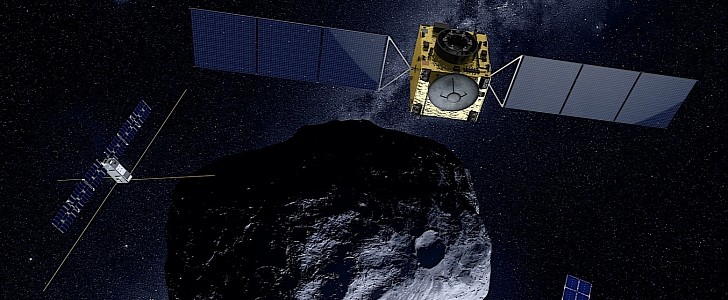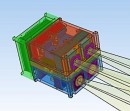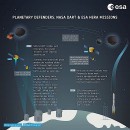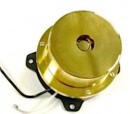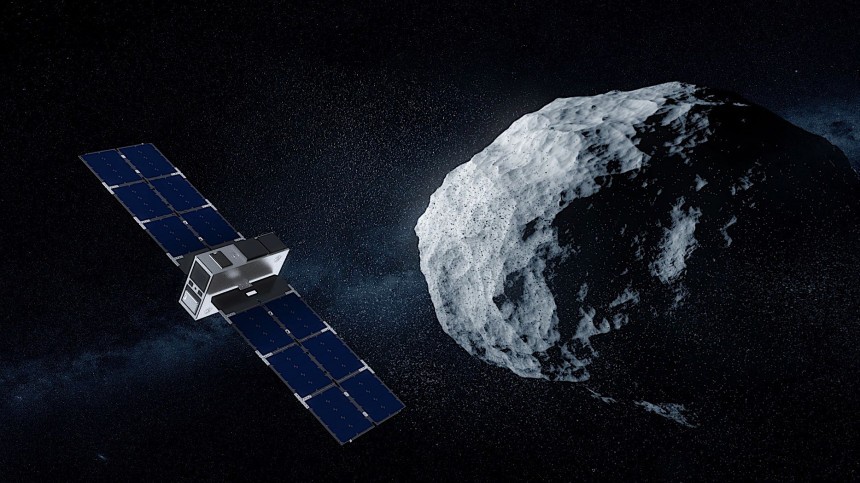Back in November 2021, a SpaceX Falcon 9 rocket took off from Vandenberg Space Force Base in California. It was carrying to the dark void a spacecraft called Double Asteroid Redirection Test (DART), humanity’s first attempt to see if it could defend itself against possible obliteration coming in the form of asteroids.
DART is presently on its way to its target, a binary asteroid called Didymos. It will reach it sometime this fall, and not waste any time before smashing into the smaller part of the binary, Dimorphos, at speeds of 15,000 mph (24,140 kph).
The goal of the test is to see whether a human-made object can alter the course of an asteroid, and use that should one be detected heading this way with malicious intents.
That “see” part of the mission is the tricky one. Didymos is very far away, orbiting at a distance of 6.8 million miles (11 million km) from our planet at the time of impact.
Scientists will try and see the results from here, using telescopes, and by measuring the change in the orbital period of the smaller asteroid around the larger one. Expected to be of several minutes, this change should be enough to prove the point.
But it won’t be enough to satisfy our curiosity as to what such a high-speed impact does to an asteroid, and we’ll also not know things such as the “precise mass of Dimorphos, its makeup and its internal structure – as well as the size and shape of the crater left by DART.”
To properly understand that, another mission will be sent the Didymos way, with the explicit purpose of acting as a “crime scene investigation” detective, according to the organization running it, the European Space Agency (ESA).
The mission is called Hera, and it comprises the carrier spacecraft, and two CubeSats called Milani and Juventas. It will launch in 2024, and is expected to reach its target in late 2026 or early 2027, opening the doors to “well-understood and repeatable deflection techniques” that could be used in the future as well, “ready to be deployed if an asteroid should ever be spotted heading Earthward.”
It’s not the Hera spacecraft that will steal the spotlight, though, but the two CubeSats, the robotic detectives carried by it. They are square machines, 10 cm (4 inches) in size, and ESA’s first CubeSats sent to an asteroid in deep space, and should provide our world’s first-ever radar soundings within an asteroid.
Milani house two instruments, one called ASPECT, and another one named VISTA. ASPECT is a hyperspectral imager that will be used to “survey the surface down to a maximum spatial resolution of 1 meter (3.2 feet).” VISTA, on the other hand, is a thermogravimetre analyzer, a fancy term for a detector capable of looking for signs of volatiles (including water), light organics, and molecular contamination.
The CubeSat will fly preset trajectories around Dydimos, at distances ranging between two and ten km (1.2 to six miles), trying to maintain a position above the sunlit side of the asteroid, and the entire rock in view. It will keep at it for about 12 weeks.
The second one, Juventas, is the same size as Milani, and comes equipped with a low frequency radar, which once unfurled will have a span of 1.5 meters (5 feet). The radar will be used to help the hardware perform “the very first radar probe inside an asteroid.”
The Hera mission is being put together by a large number of European companies, led by German OHB. It was initially supposed to be launched together with DART, but over the years, as work progressed, the two missions got separated.
The goal of the test is to see whether a human-made object can alter the course of an asteroid, and use that should one be detected heading this way with malicious intents.
That “see” part of the mission is the tricky one. Didymos is very far away, orbiting at a distance of 6.8 million miles (11 million km) from our planet at the time of impact.
Scientists will try and see the results from here, using telescopes, and by measuring the change in the orbital period of the smaller asteroid around the larger one. Expected to be of several minutes, this change should be enough to prove the point.
To properly understand that, another mission will be sent the Didymos way, with the explicit purpose of acting as a “crime scene investigation” detective, according to the organization running it, the European Space Agency (ESA).
The mission is called Hera, and it comprises the carrier spacecraft, and two CubeSats called Milani and Juventas. It will launch in 2024, and is expected to reach its target in late 2026 or early 2027, opening the doors to “well-understood and repeatable deflection techniques” that could be used in the future as well, “ready to be deployed if an asteroid should ever be spotted heading Earthward.”
It’s not the Hera spacecraft that will steal the spotlight, though, but the two CubeSats, the robotic detectives carried by it. They are square machines, 10 cm (4 inches) in size, and ESA’s first CubeSats sent to an asteroid in deep space, and should provide our world’s first-ever radar soundings within an asteroid.
The CubeSat will fly preset trajectories around Dydimos, at distances ranging between two and ten km (1.2 to six miles), trying to maintain a position above the sunlit side of the asteroid, and the entire rock in view. It will keep at it for about 12 weeks.
The second one, Juventas, is the same size as Milani, and comes equipped with a low frequency radar, which once unfurled will have a span of 1.5 meters (5 feet). The radar will be used to help the hardware perform “the very first radar probe inside an asteroid.”
The Hera mission is being put together by a large number of European companies, led by German OHB. It was initially supposed to be launched together with DART, but over the years, as work progressed, the two missions got separated.
